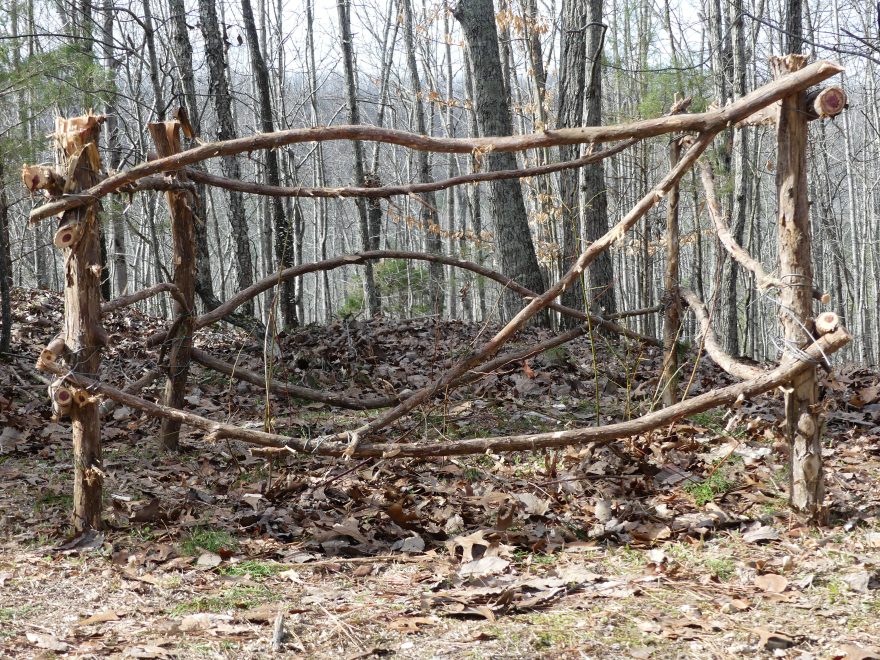Backstory — Late fall every year, I drive over to my neighbor Nick’s house and we go into his yard searching for blueberry sprigs small enough to grip at the base of the stem and tug loose from the earth.
We set the bent roots down in a bucket of water, and I carry that bucket home sloshing in the bed of Ruby, our ’98 Dodge truck. As many have told me, and it’s true, “You can’t kill a Dodge.”
Usually, I plant the sprigs right away, but one time I waited four months before taking them out of the bucket — had too much else going on and couldn’t get to the planting. But those sprigs were fine, hearty, they didn’t rot.
I’ve been planting the sprigs in the easement on the southern end of the property for a while now. That easement is where Alabama Power strings its lines from power pole to power pole. I’m trying to make it into a meadow.
We set two beehives in the easement. We have a fenced in garden for summer tomatoes, okra, peas, and Tina’s zinnias (her favorite flower). I’ve cut paths between the briars that are just now leafing. The stalks have grown tall enough and tough enough to produce good blackberries in May.
One day, Alabama Power is going to come in with heavy equipment to cut down the sprawling branches along the tree line, so I need to put a fence around the blueberries to keep Alabama Power from running them over.
*
Planning — I didn’t wait four months this time and planted the sprigs from Nick’s in November. Then I waited to see if they would last the winter.
More and more, I try to use whatever is on our ten acres to build with. Cedars last forever once cut, at least the purple hearts do. So, I decided to use cedar instead of metal or wooden posts and a wire fence.
For the design, I decided on a mix of two different styles.
One style — the triangle of cedar rails Nick put around his Arkansas Black apple trees to keep deer from rubbing off the bark with their antlers. He first saw this type of fence in Africa.
The other style — a place called Canoe Creek Coffee in Ashville, about a half hour away. That coffeehouse is closed for good now, but they used thin cedar branches weaved together to make a thick railing around their deck.
Though cedars would be free, I was reluctant to cut one down. We don’t have a lot of them, and we try to keep the ones we do have alive. I have cedar rails lying around, but most of them are too big to hammer into the earth.
Then in January, during the second cold snap, a loud boom at night woke me. I worried the new cistern of water had burst. But the cistern was fine, just frozen. I’d have to wait on the thaw to get the water. But when I walked through the woods, I came across a cedar fallen into a poplar’s branches. The trunk had shattered at one spot where the water inside had frozen as the temperatures dropped. Then the water expanded, causing the wood fibers to explode.
*
The Fence — Half the blueberry sprigs survived the fall drought and the two cold snaps.
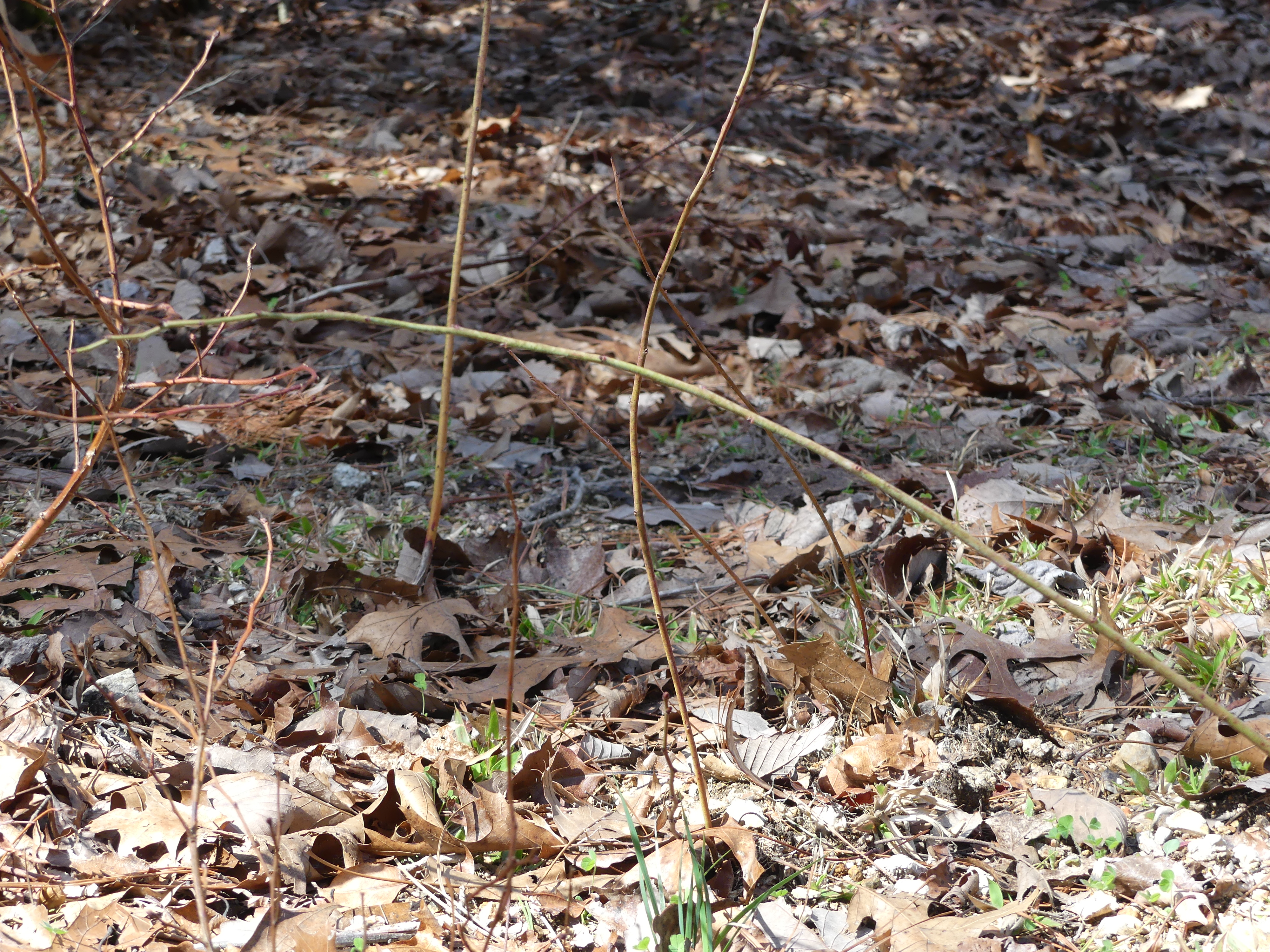
So, I cut the cedar down. Limbed it.
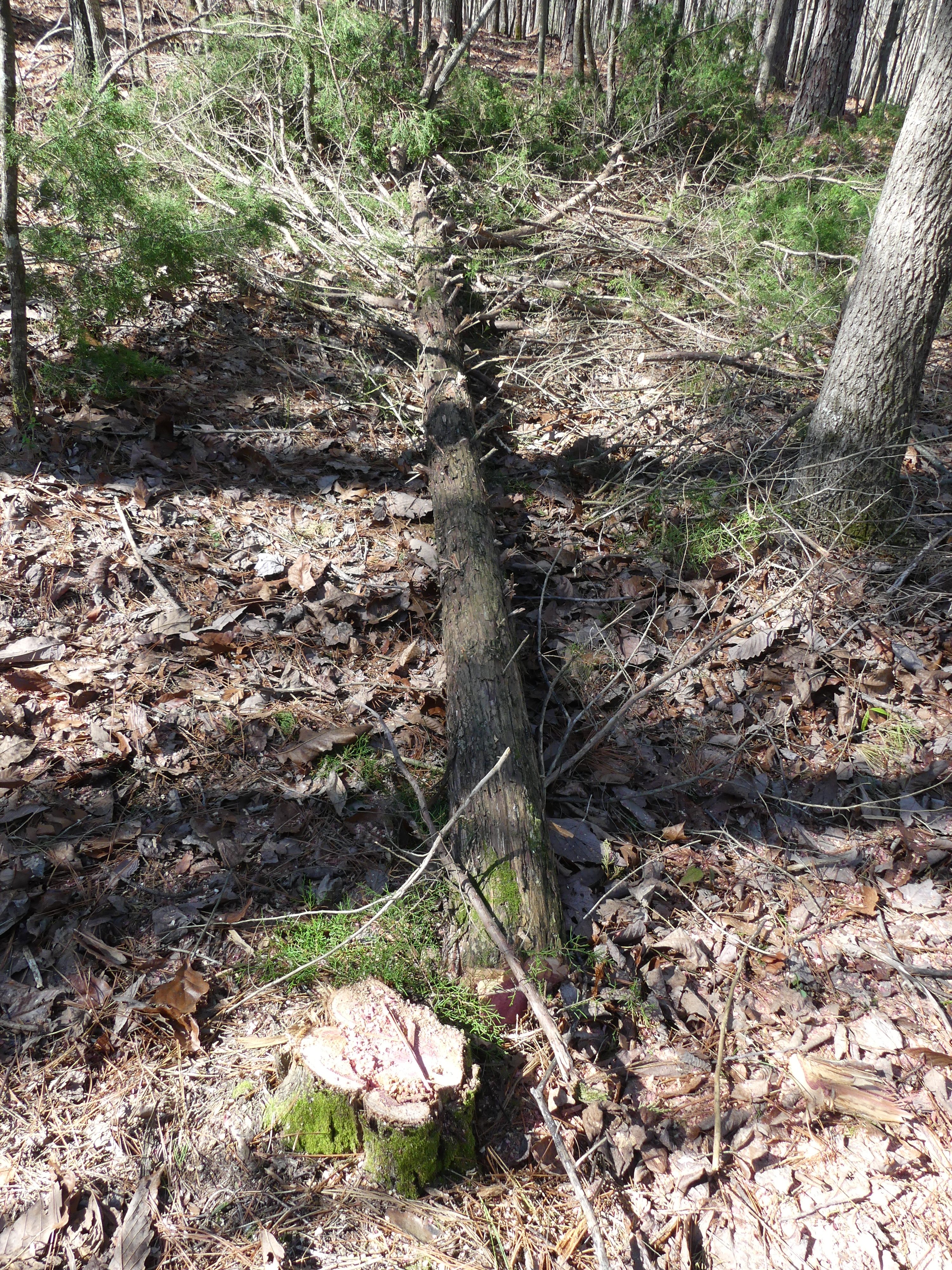
I cut two, four-foot pieces down from the crown, saving the largest part of the cedar for when I build a front porch. I brought the pieces over to the table saw and made them into stakes (along with two older pieces of cedar I had on hand).
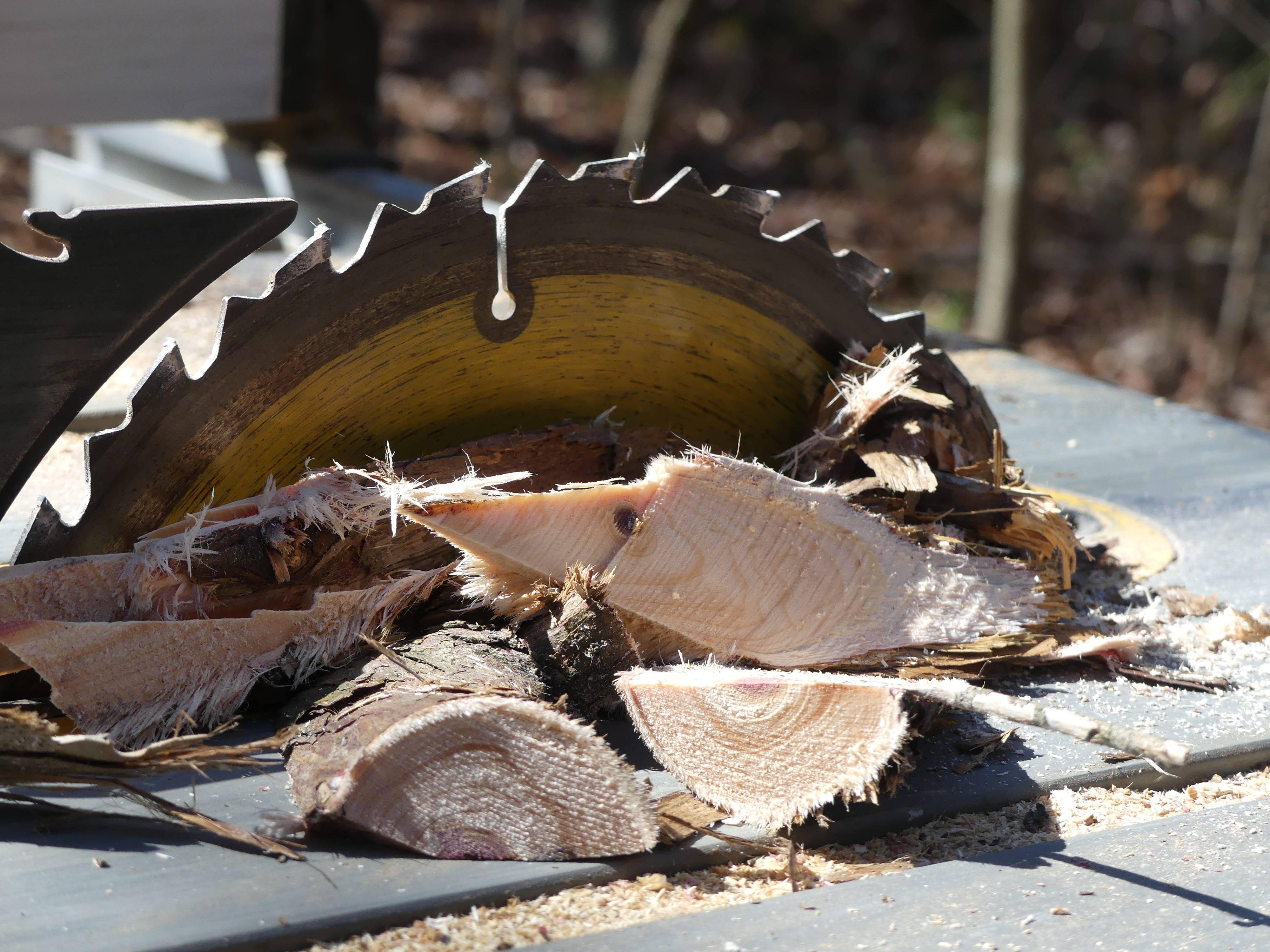
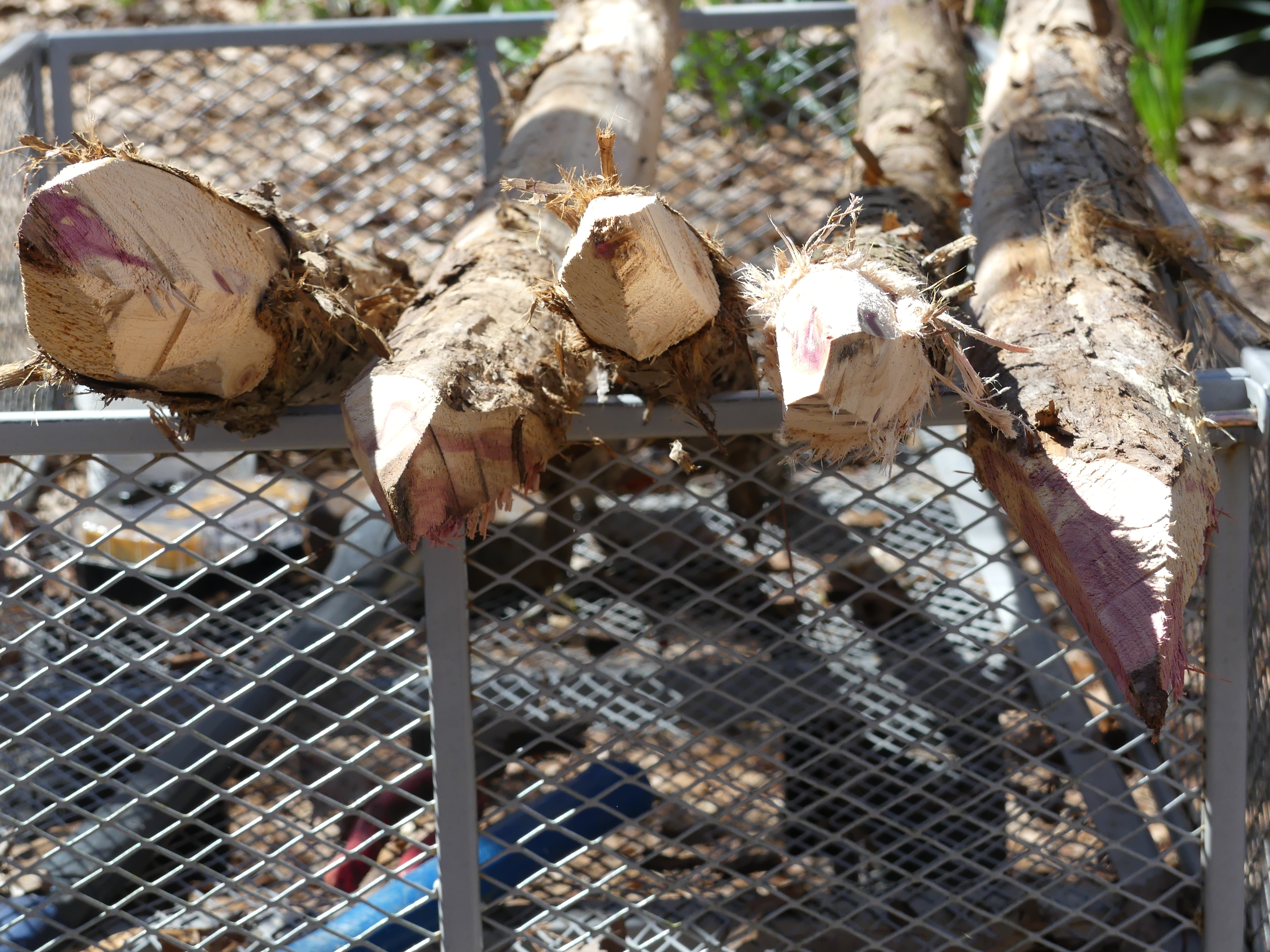
I hammered the stakes around the blueberry sprigs using a mallet to get thing started, a sledgehammer to get things deeper. I also had a fence post pounder that I was able to use on the smallest post in back.
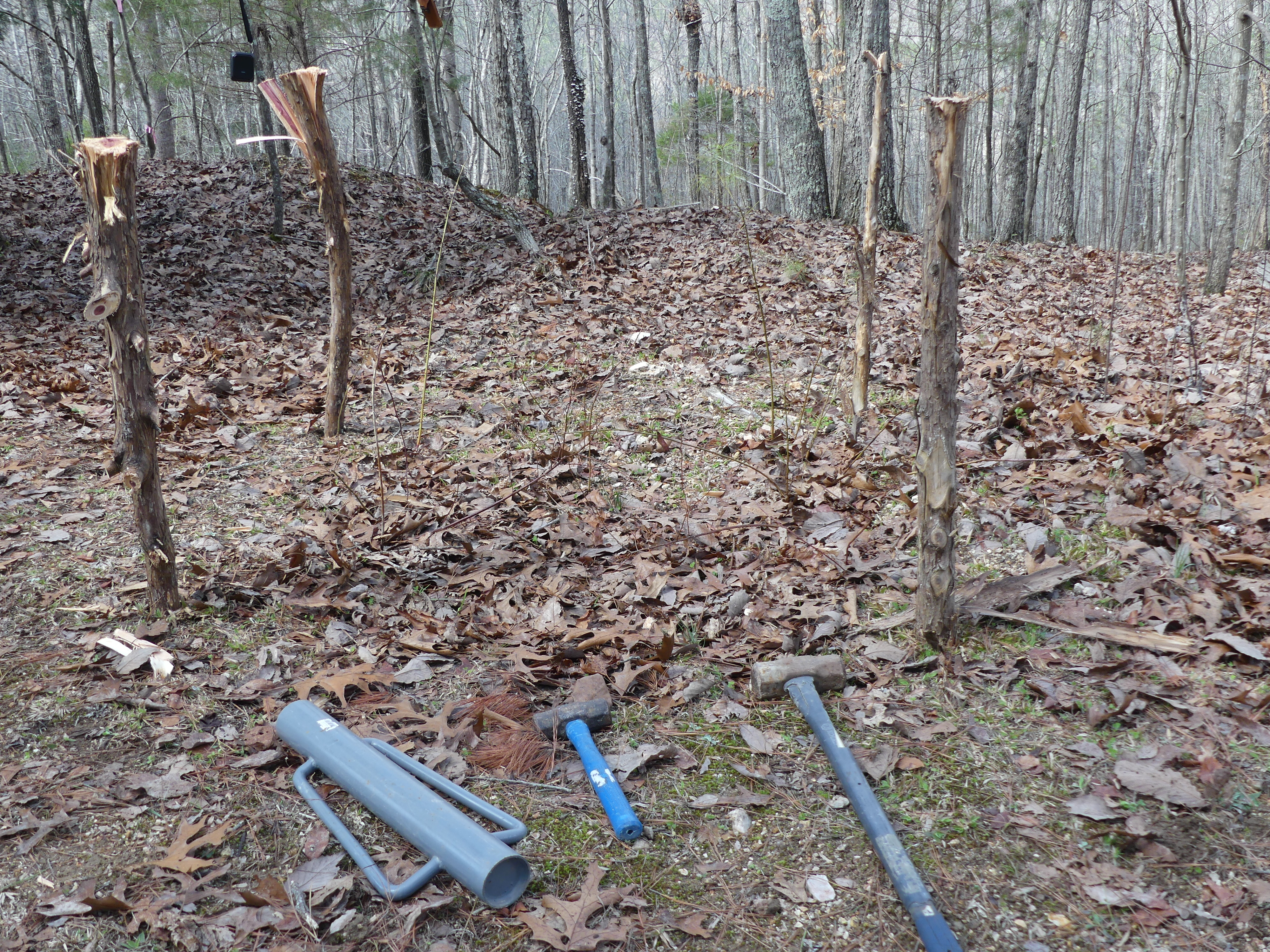
The one thing I had to be careful about was not shattering the stakes while trying to get them deep enough to stand on their own. As you can see in the picture, I did okay.
Fortunately, I was able to drive them in fairly easily. A lot had to do with all the recent rain.
Next, I drug the branches from the cedar through the easement and began to fashion them into rails. I didn’t set out to make things rigid or precise. I just laid the branches down and figured where they might fit. Then I tied them into place with wire.
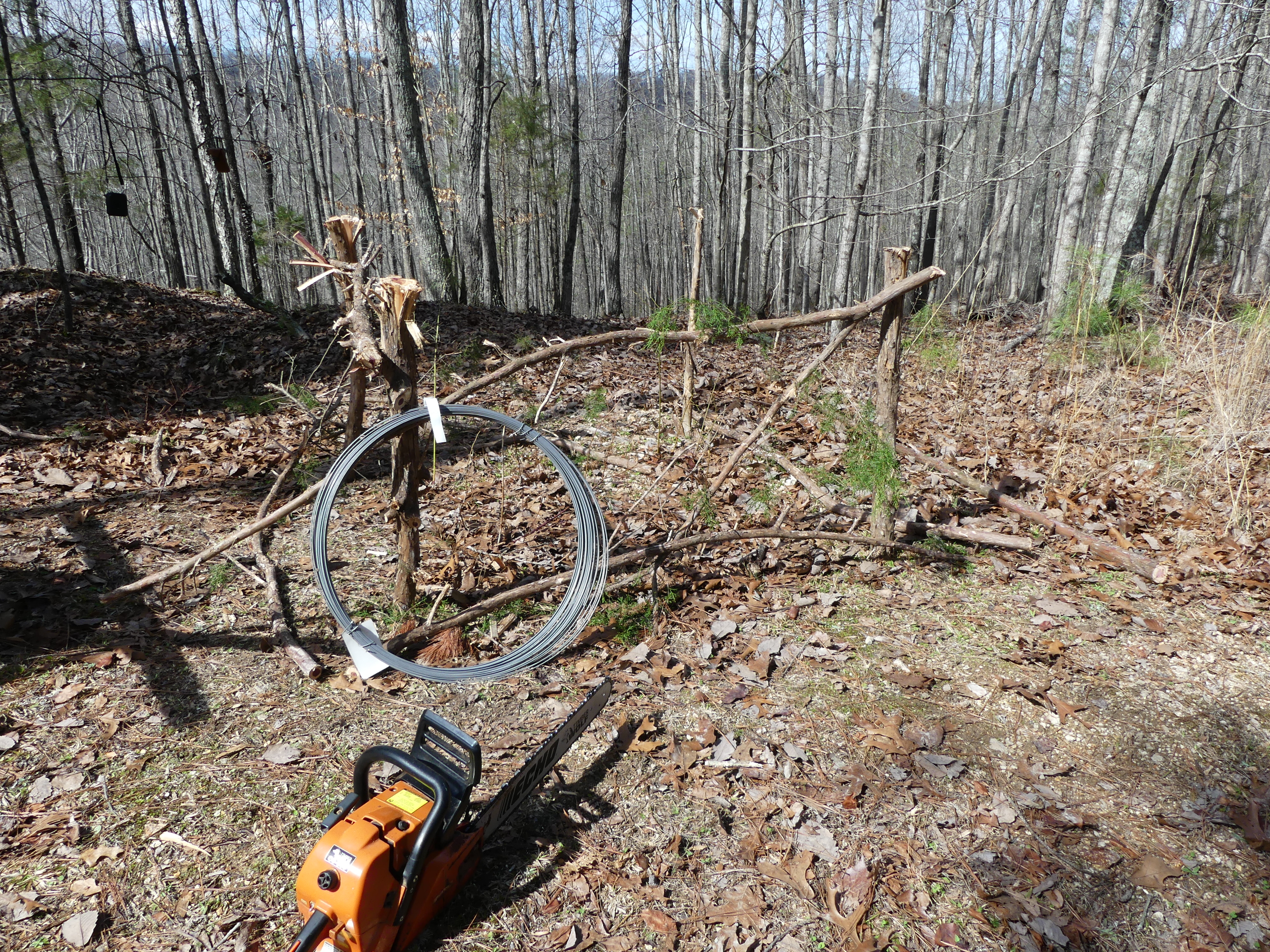
Nails and screws would work all right for a while, but the wind would pull on the rails, and the wood around the fasteners would loosen, chip, break apart. Wire, however, would hold the thin branches in place. And unlike rope, wire would last.
The last two steps?
I took pliers and twisted the wire into tighter and tighter knots.
I took the chainsaw and cut knots and needles off the branches.
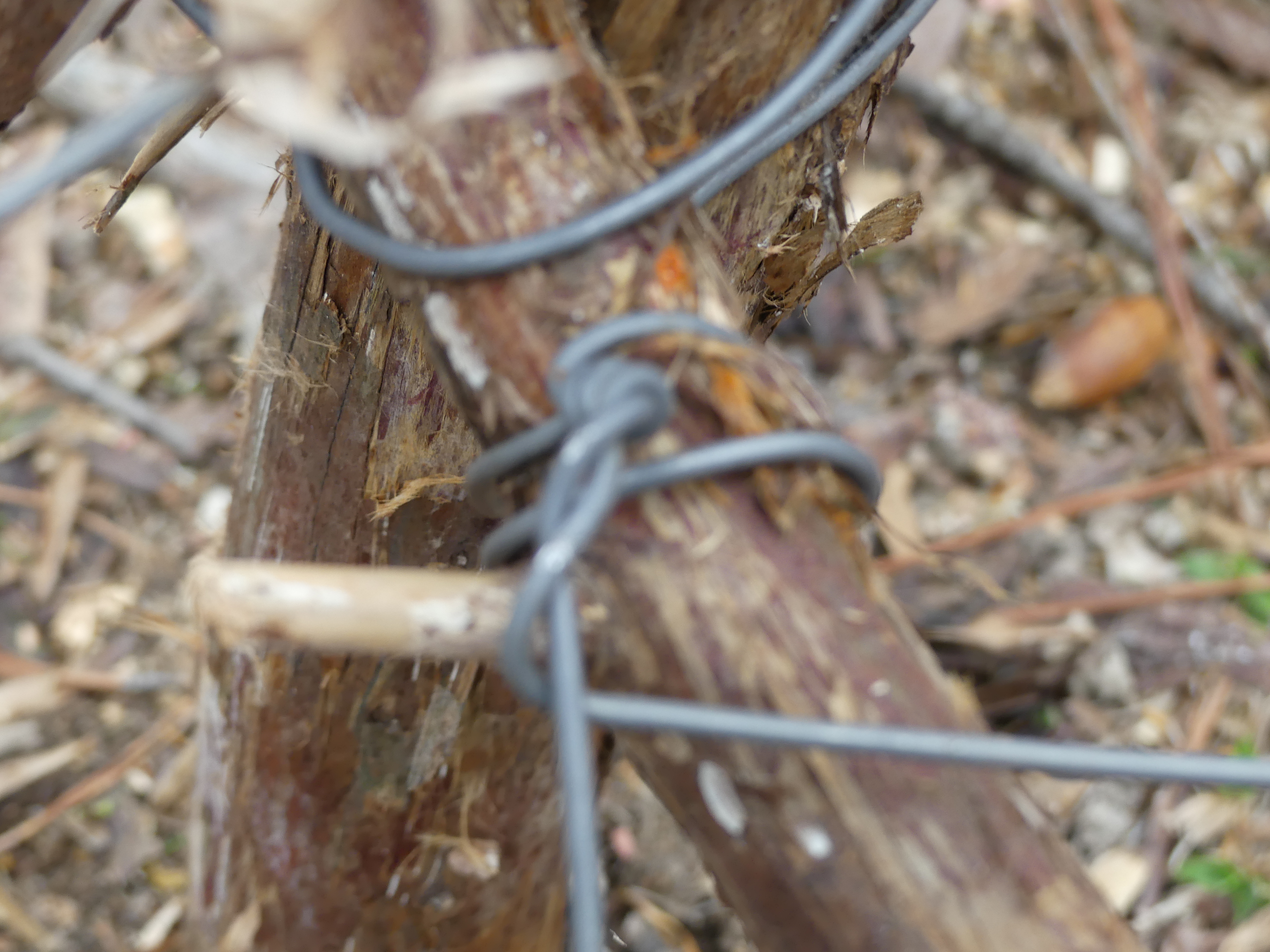
My neighbor Nina came by and asked if I was building the fence to keep animals out. The fence I made had too many holes for that. I wanted to leave as much open space as possible for the sun to get to the sprigs.
All together, took an afternoon to build.
